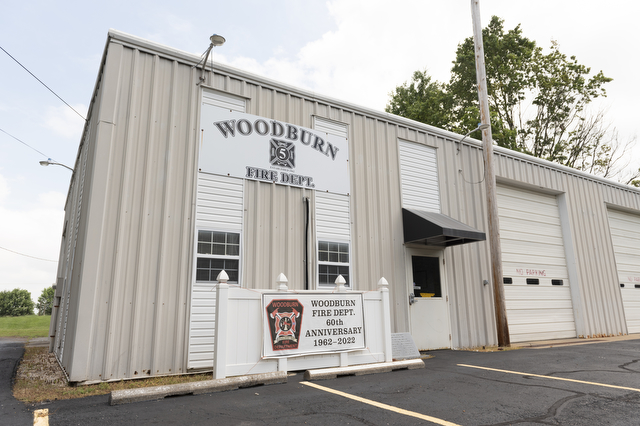Opposition mounts against Cherry Hall renovation plan
Published 7:08 am Tuesday, May 6, 2025

1/12
Swipe or click to see more
Janette Scott, senior associate at design and architecture firm Gensler, speaks during an open house to reveal the renovation plans and renderings for Western Kentucky University’s Cherry Hall on Thursday, May 1, 2025. The project, which will aim to preserve the history and main features of the 88-year-old building named after WKU’s founder and first president, will include modernized classrooms, collaborative spaces, sensory relief spaces for the neurodiverse community and faculty offices, and is scheduled to be completed in 2027.
GRACE MCDOWELL / DAILY NEWS
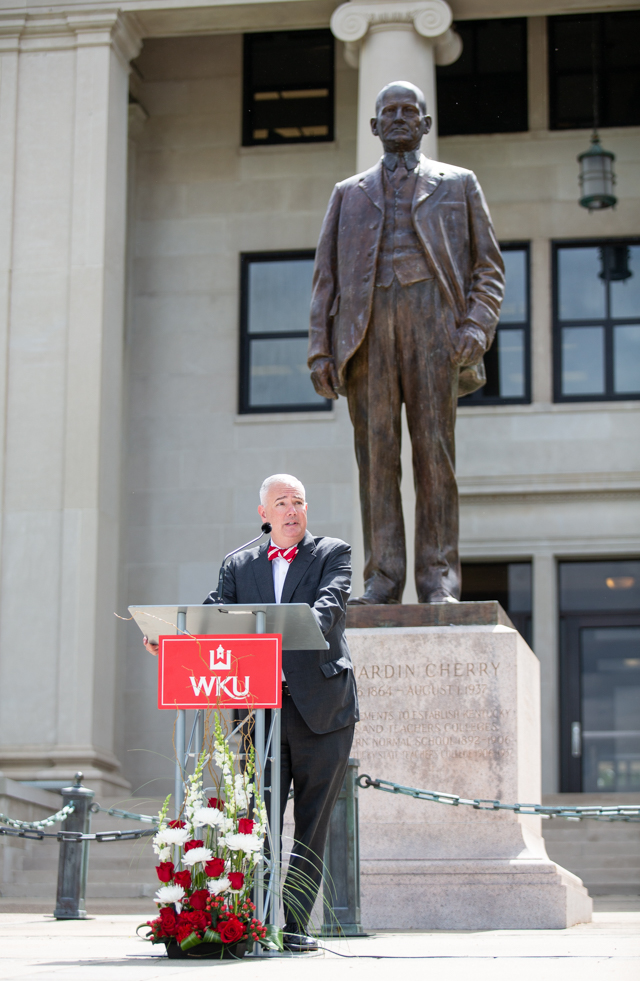
2/12
Swipe or click to see more
Western Kentucky University President Timothy Caboni speaks during an open house to reveal the renovation plans and renderings for Cherry Hall on Thursday, May 1, 2025. The project, which will aim to preserve the history and main features of the 88-year-old building named after WKU’s founder and first president, will include modernized classrooms, collaborative spaces, sensory relief spaces for the neurodiverse community and faculty offices, and is scheduled to be completed in 2027.
GRACE MCDOWELL / DAILY NEWS
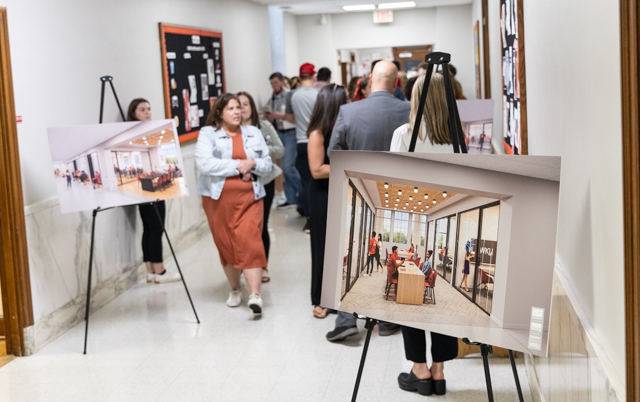
3/12
Swipe or click to see more
Western Kentucky University faculty, students and members of the community check out the renderings of the renovation plans for Cherry Hall as they walk through the building during an open house event on Thursday, May 1, 2025. The renovation project, which will aim to preserve the history and main features of the 88-year-old building named after WKU’s founder and first president, will include modernized classrooms, collaborative spaces, sensory relief spaces for the neurodiverse community and faculty offices, and is scheduled to be completed in 2027.
GRACE MCDOWELL / DAILY NEWS
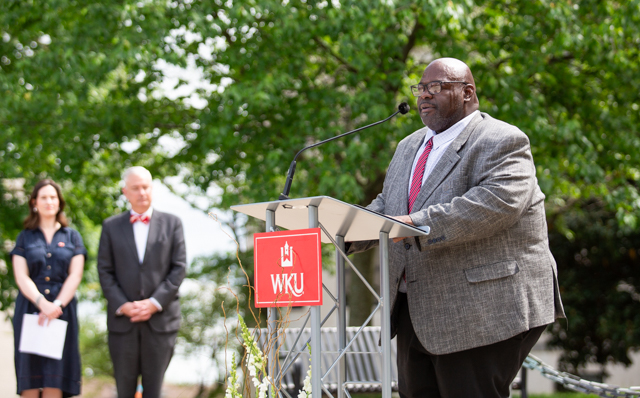
4/12
Swipe or click to see more
Dr. Terrance Brown, Western Kentucky University Dean of Potter College of Arts and Letters (PCAL), speaks during an open house to reveal the renovation plans and renderings for Cherry Hall on Thursday, May 1, 2025. The project, which will aim to preserve the history and main features of the 88-year-old building named after WKU’s founder and first president, will include modernized classrooms, collaborative spaces, sensory relief spaces for the neurodiverse community and faculty offices, and is scheduled to be completed in 2027.
GRACE MCDOWELL / DAILY NEWS
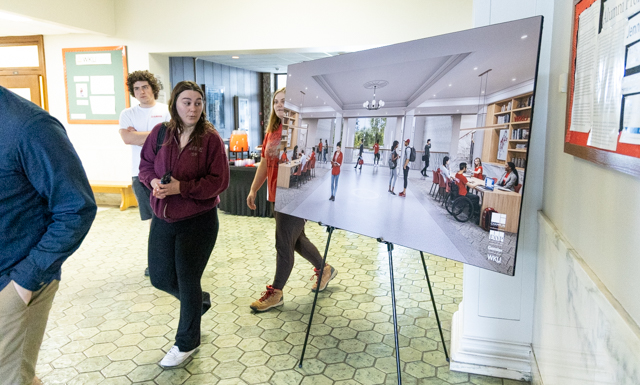
5/12
Swipe or click to see more
Western Kentucky University students check out the renderings of the renovation plans for Cherry Hall as they walk through the building during an open house event on Thursday, May 1, 2025. The renovation project, which will aim to preserve the history and main features of the 88-year-old building named after WKU’s founder and first president, will include modernized classrooms, collaborative spaces, sensory relief spaces for the neurodiverse community and faculty offices, and is scheduled to be completed in 2027.
GRACE MCDOWELL / DAILY NEWS
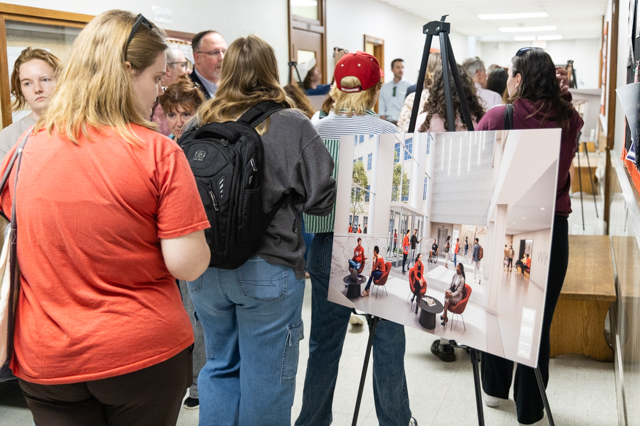
6/12
Swipe or click to see more
Western Kentucky University faculty, students and members of the community check out the renderings of the renovation plans for Cherry Hall as they walk through the building during an open house event on Thursday, May 1, 2025. The renovation project, which will aim to preserve the history and main features of the 88-year-old building named after WKU’s founder and first president, will include modernized classrooms, collaborative spaces, sensory relief spaces for the neurodiverse community and faculty offices, and is scheduled to be completed in 2027.
GRACE MCDOWELL / DAILY NEWS
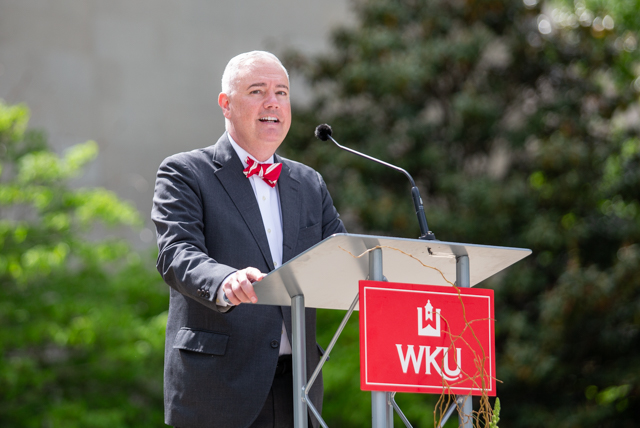
7/12
Swipe or click to see more
Western Kentucky University President Timothy Caboni speaks during an open house to reveal the renovation plans and renderings for Cherry Hall on Thursday, May 1, 2025. The project, which will aim to preserve the history and main features of the 88-year-old building named after WKU’s founder and first president, will include modernized classrooms, collaborative spaces, sensory relief spaces for the neurodiverse community and faculty offices, and is scheduled to be completed in 2027.
GRACE MCDOWELL / DAILY NEWS
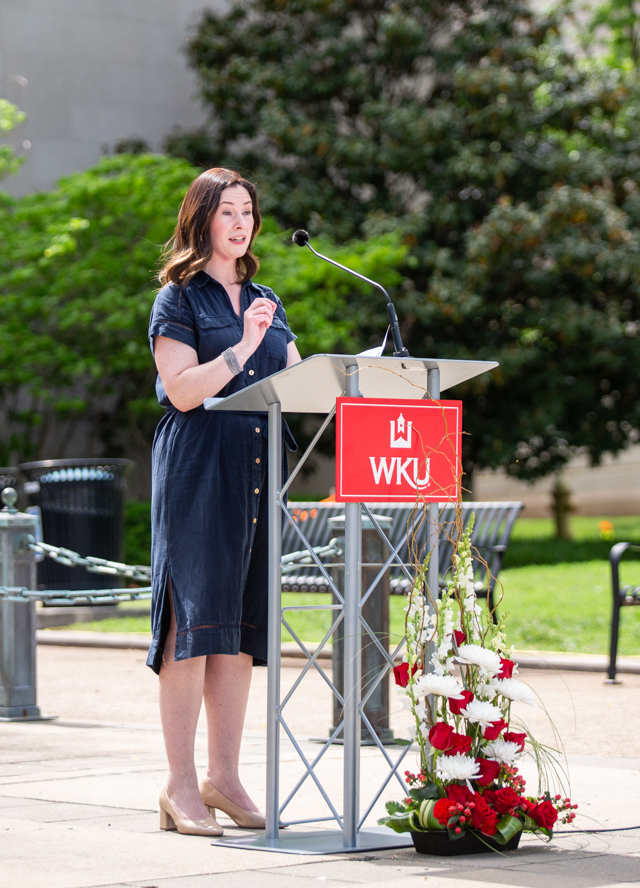
8/12
Swipe or click to see more
Janette Scott, senior associate at design and architecture firm Gensler, speaks during an open house to reveal the renovation plans and renderings for Western Kentucky University’s Cherry Hall on Thursday, May 1, 2025. The project, which will aim to preserve the history and main features of the 88-year-old building named after WKU’s founder and first president, will include modernized classrooms, collaborative spaces, sensory relief spaces for the neurodiverse community and faculty offices, and is scheduled to be completed in 2027.
GRACE MCDOWELL / DAILY NEWS
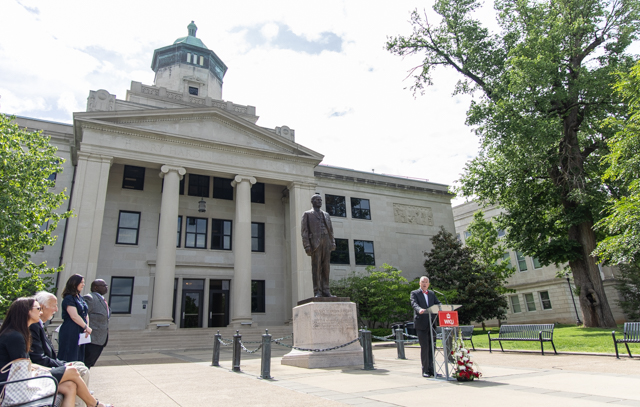
9/12
Swipe or click to see more
Western Kentucky University President Timothy Caboni speaks during an open house to reveal the renovation plans and renderings for Cherry Hall on Thursday, May 1, 2025. The project, which will aim to preserve the history and main features of the 88-year-old building named after WKU’s founder and first president, will include modernized classrooms, collaborative spaces, sensory relief spaces for the neurodiverse community and faculty offices, and is scheduled to be completed in 2027.
GRACE MCDOWELL / DAILY NEWS
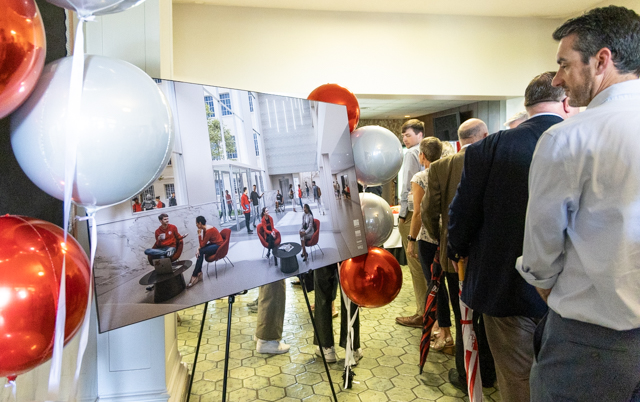
10/12
Swipe or click to see more
Western Kentucky University faculty, students and members of the community check out the renderings of the renovation plans for Cherry Hall as they walk through the building during an open house event on Thursday, May 1, 2025. The renovation project, which will aim to preserve the history and main features of the 88-year-old building named after WKU’s founder and first president, will include modernized classrooms, collaborative spaces, sensory relief spaces for the neurodiverse community and faculty offices, and is scheduled to be completed in 2027.
GRACE MCDOWELL / DAILY NEWS
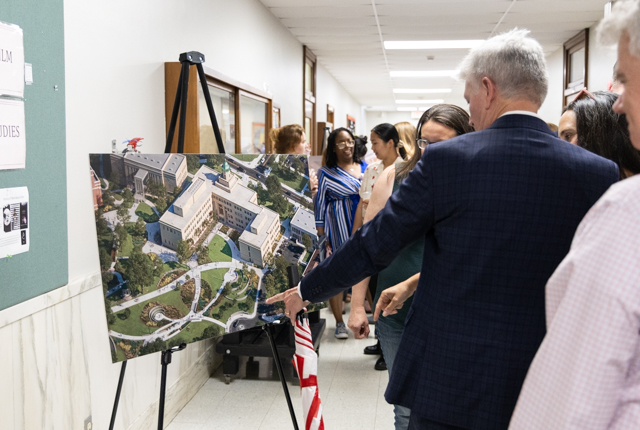
11/12
Swipe or click to see more
Western Kentucky University faculty, students and members of the community check out the renderings of the renovation plans for Cherry Hall as they walk through the building during an open house event on Thursday, May 1, 2025. The renovation project, which will aim to preserve the history and main features of the 88-year-old building named after WKU’s founder and first president, will include modernized classrooms, collaborative spaces, sensory relief spaces for the neurodiverse community and faculty offices, and is scheduled to be completed in 2027.
GRACE MCDOWELL / DAILY NEWS
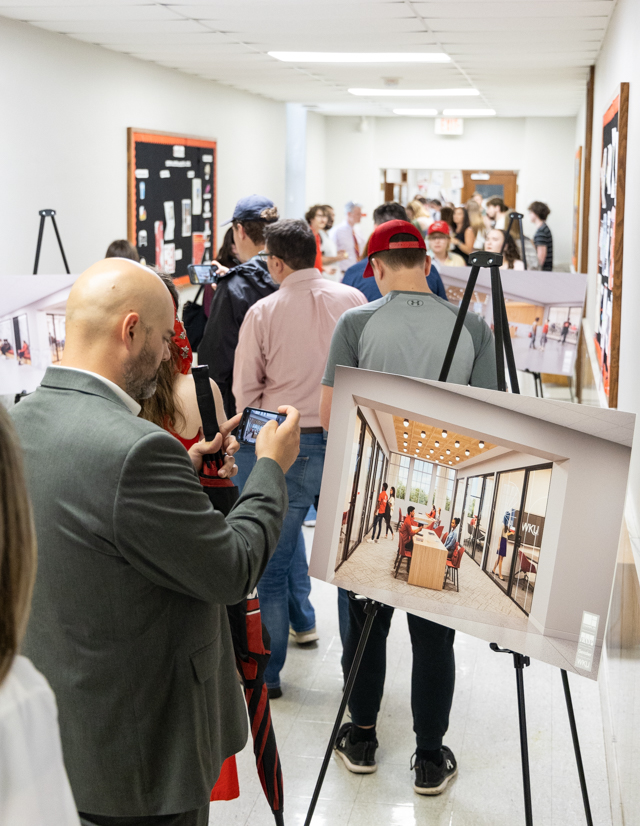
12/12
Swipe or click to see more
Western Kentucky University faculty, students and members of the community check out the renderings of the renovation plans for Cherry Hall as they walk through the building during an open house event on Thursday, May 1, 2025. The renovation project, which will aim to preserve the history and main features of the 88-year-old building named after WKU’s founder and first president, will include modernized classrooms, collaborative spaces, sensory relief spaces for the neurodiverse community and faculty offices, and is scheduled to be completed in 2027.
GRACE MCDOWELL / DAILY NEWS
BY DAVID MAMARIL HOROWITZ
david.horowitz@bgdailynews.com
Following Thursday’s release of renderings for Cherry Hall’s renovation, opposition has mounted against the plans, as some community members express concerns that the design will strip away the building’s historic, well-loved architecture.
“The alarm for saving Cherry Hall and the Faculty House is not just about bricks and mortar — it is about ensuring that we protect our sense of shared memory and cultural heritage,” said WKU alumnus Sean Jacobson, who wrote an honors thesis on its history prior to his graduation in 2016.
“Cherry Hall is the crown of the Hill and the emblem of our university seal — it is also a living monument to our founder, Dr. Cherry, and the generations of Hilltoppers who have gone before us. Once you sacrifice that building’s integrity on the altar of modernity, you can never recover it.”
A petition launched May 1 collected at least 549 signatures as of Monday, including a statement of support from Jacobson.
“Rather than erasing history, WKU should address infrastructure issues, restore the building, and create more inclusive spaces without the lifeless modernization,” the first petition states, noting the project is slated to commence in summer and reach completion in 2027. “We must take immediate action to call (WKU President Tim Caboni) and the WKU Board of Regents to maintain and protect the history of Cherry Hall.”
WKU has stated that the project, funded through $75 million from the General Assembly in asset-preservation funds and a 15% match by Western, would preserve “the most iconic features” — including the historic marble steps and most of the exterior — while modernizing classrooms and technology. It’ll also replace the 1937-built restrooms, modify the rear entrance, add collaborative spaces, feature a large second-floor classroom that can serve more than 100 as an auditorium, install glass classroom windows, include sensory relief spaces for neurodivergent community members, and more.
“We deeply value the historical significance of Cherry Hall and the strong connection our campus community feels toward it,” said Terrance Brown, dean of the Potter College of Arts and Letters, in a statement. “As the project unfolds, I think the WKU family will be excited to see the care taken to preserve the building’s unique historic features.
“At a time when the arts and humanities are regularly devalued and deemphasized, I am extremely grateful to the WKU administration and the Kentucky General Assembly for their commitment to preserving our campus’s most iconic building.”
Brown added that it’s important to remember the renderings are visual illustrations to offer “a glimpse into design concepts, not final plans.”
Jacobson said he feels much of the community agrees the building ought to have some restoration or renovation — but it needs to be done while ensuring its historic feel in a way that honors its history and meaning in the community.
“It is important for students to have tangible reminders that when they begin their college education, they are taking part in a noble — even sacred — task of molding their minds and souls to become engaged citizens seeking, as Dr. Cherry once said, ‘Life, More Life,’ ” Jacobson said. “The current modernistic redesign violates that spirit and dishonors those who came before us.”
Jacobson added that he thinks there’s been grief within the student, faculty and alumni communities over transparency, given that the plans, approved in August, were only just revealed — shortly before summer construction commences.
There has been at least some engagement.
The university’s building design process has compiled two standing committees that met regularly representative of some faculty, staff and leadership in the building as well as leadership from the college dean’s office, said WKU Political Science Professor Jeff Budziak, the representative of the college dean’s office on the committee involved in the building design process.
“Those committees have been working regularly with Gensler to talk about (…) the academic spaces, faculty offices, layout, as well as classroom design and those things,” Budziak said.
History department faculty member Jennifer Walton-Hanley said the design is pretty and works well in The Commons at Helms Library — which was designed by the same firm, Gensler — because the latter has a different purpose than Cherry Hall. Still, like others in opposition, she holds that the renderings would seem to remove much of the historic character and charm.
The biggest concern Walton-Hanley has heard, she said, are the glass walls of the classrooms and the back of the building. On one hand, there are general safety concerns with the transparent windows, she said. And from an accessibility standpoint, students and faculty who are neurodiverse and/or live with anxiety will in all probability find the glass walls distracting and uncomfortable, she added.
“I love Cherry — it’s been my work home for 17 years,” she said. “It needs some TLC for sure — nobody denies that — but I think it would be better to strategically renovate the building so we keep its current footprint but prepare it for the next 50 years up the hill.”




























